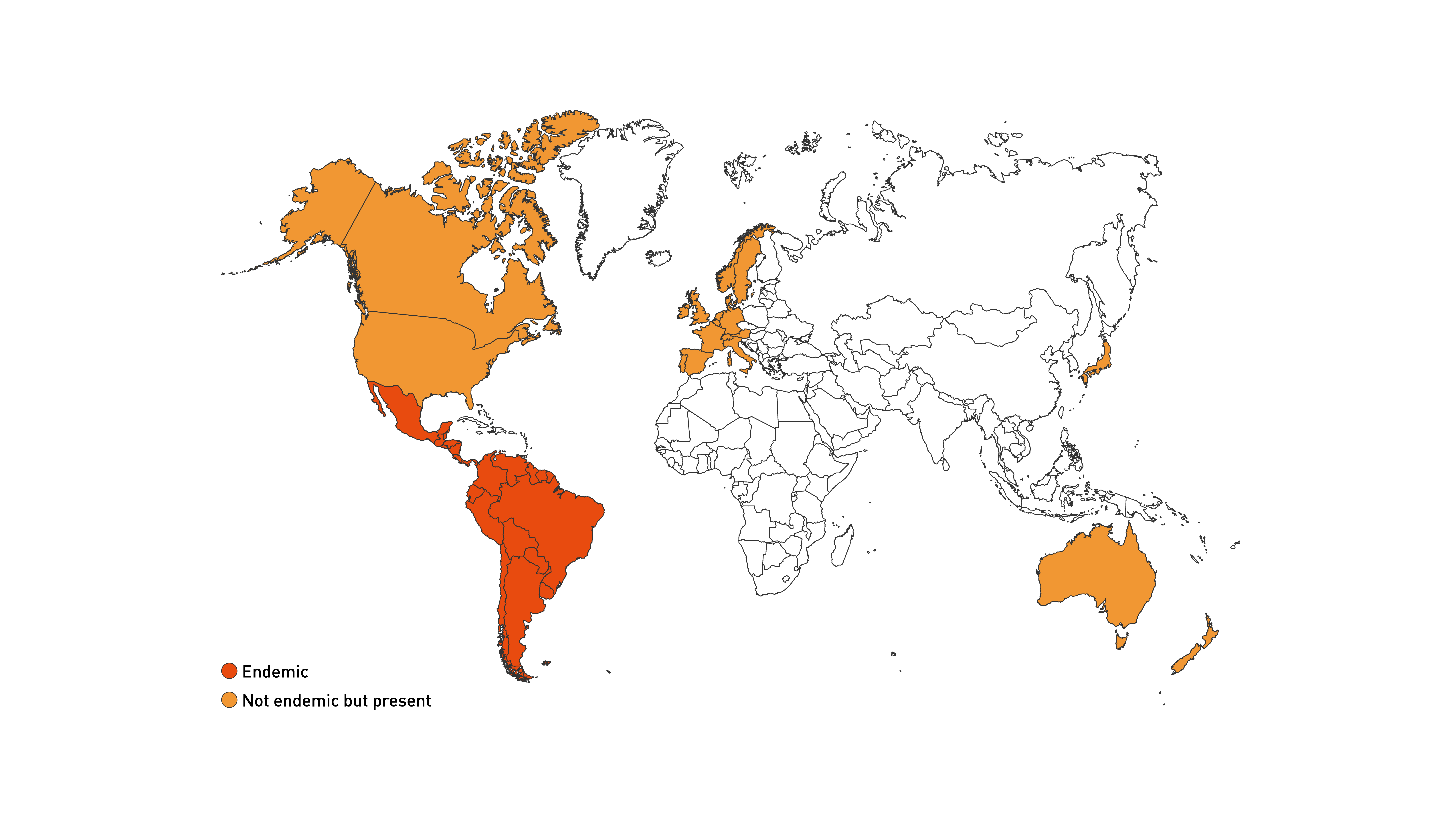
Chagas disease, also known as American trypanosomiasis, is a potentially life-threatening disease caused by the parasite Trypanosoma cruzi. It is most commonly transmitted by biting insects known as ‘kissing bugs’ that are infected with the parasite. As people typically show no symptoms for many years, most are unaware they have Chagas.
Up to a third of people with Chagas will suffer heart damage that becomes evident only many years later and can lead to progressive heart failure or sudden death. Chagas kills more people in Latin America each year than any other parasitic disease, including malaria.

The two current treatments, benznidazole and nifurtimox, were both discovered half a century ago.
They are effective against the disease if given soon after infection and appear to be effective in the chronic asymptomatic phase of the disease. However, they have significant drawbacks, including:
To improve treatment in the short and medium-term, we are investigating new regimens of benznidazole to reduce side effects, and, together with partners, we have helped develop the first form of benznidazole specifically for children.
Chagas disease has been targeted by the World Health Organization (WHO) for elimination but fewer than 10% of people with Chagas have been diagnosed and even fewer have been treated. To eliminate the disease, we need a new drug for both chronic stages of the disease that is safe, efficacious, and adapted to the field. Access to treatment and diagnostics also needs to be greatly expanded. We also need to identify better biomarkers, to measure the impact of treatment and predict who is at risk for developing severe symptoms.
We aim to deliver new, safer, more affordable and effective treatments for people affected by Chagas disease. We are also focused on improving access to diagnosis and treatment using existing tools.
Find out about our work developing treatments for Chagas disease
The disease has two clinical phases:
Chronic phase, which can be divided into two stages:
Suspected cases of acute Chagas are confirmed by detecting parasites in the blood through a microscope. In the chronic phase, when the vast majority of people are tested, the parasite is difficult to detect. Healthcare providers instead test blood for antibodies, which are produced by the body to fight the disease. Because no test is sufficiently accurate to work as a stand-alone, two or three different tests must be used. A lack of easy, straightforward testing in most settings is one of the major barriers that prevents people from starting treatment. After treatment, it takes many years for current tests to show as “negative”. A better test of cure is another important need.
Find out about our work on biomarkers
Last updated April 2023